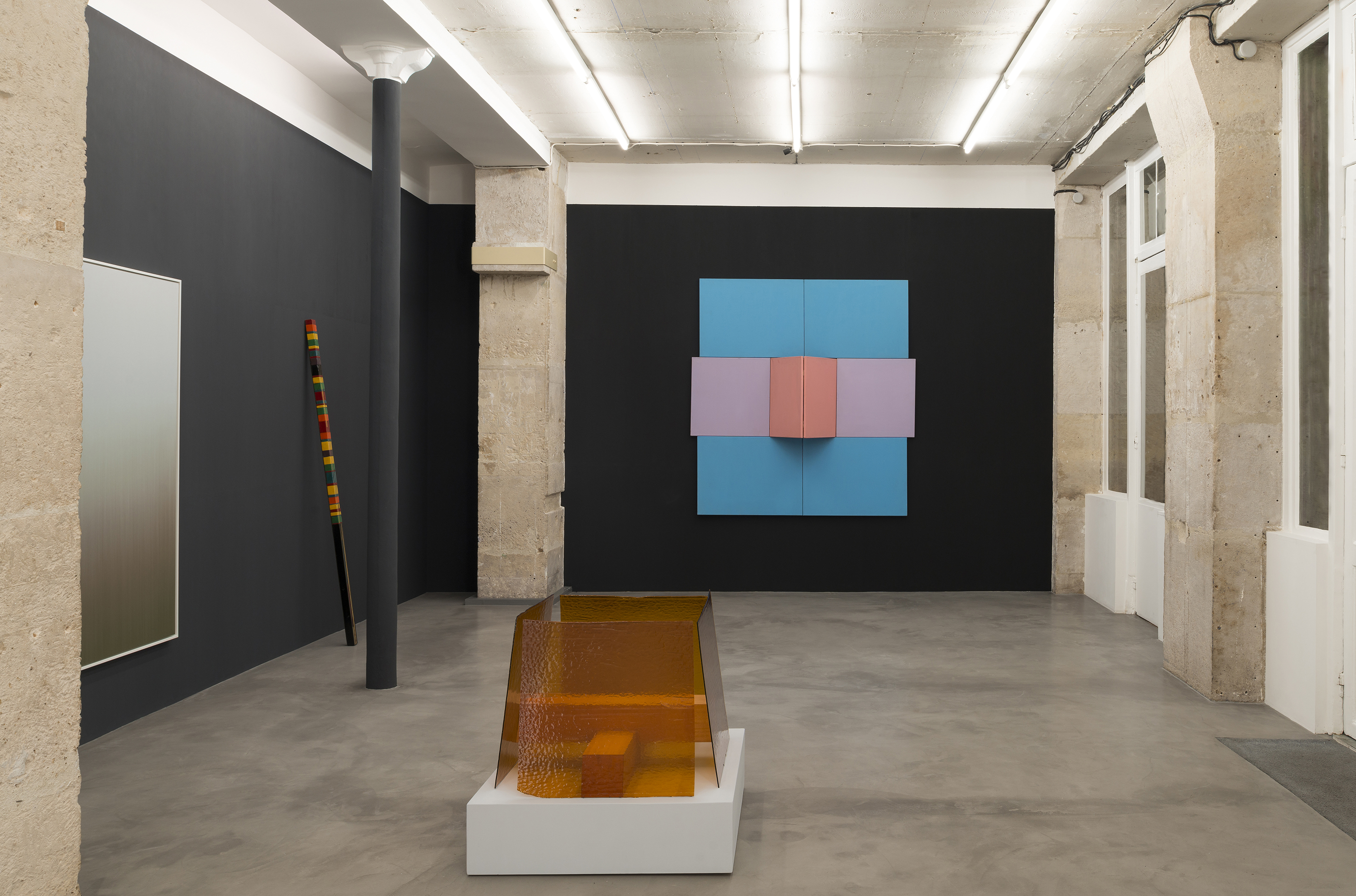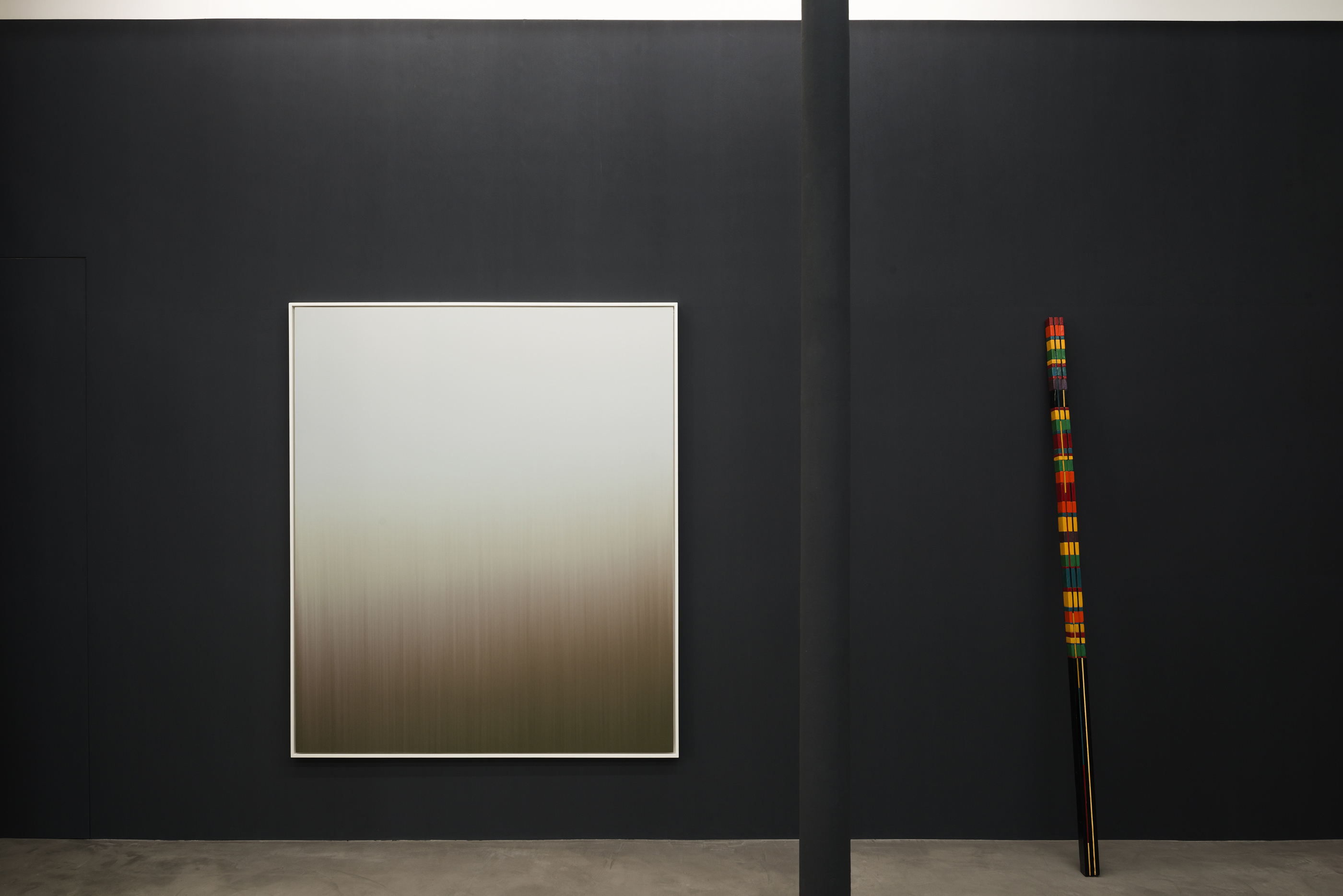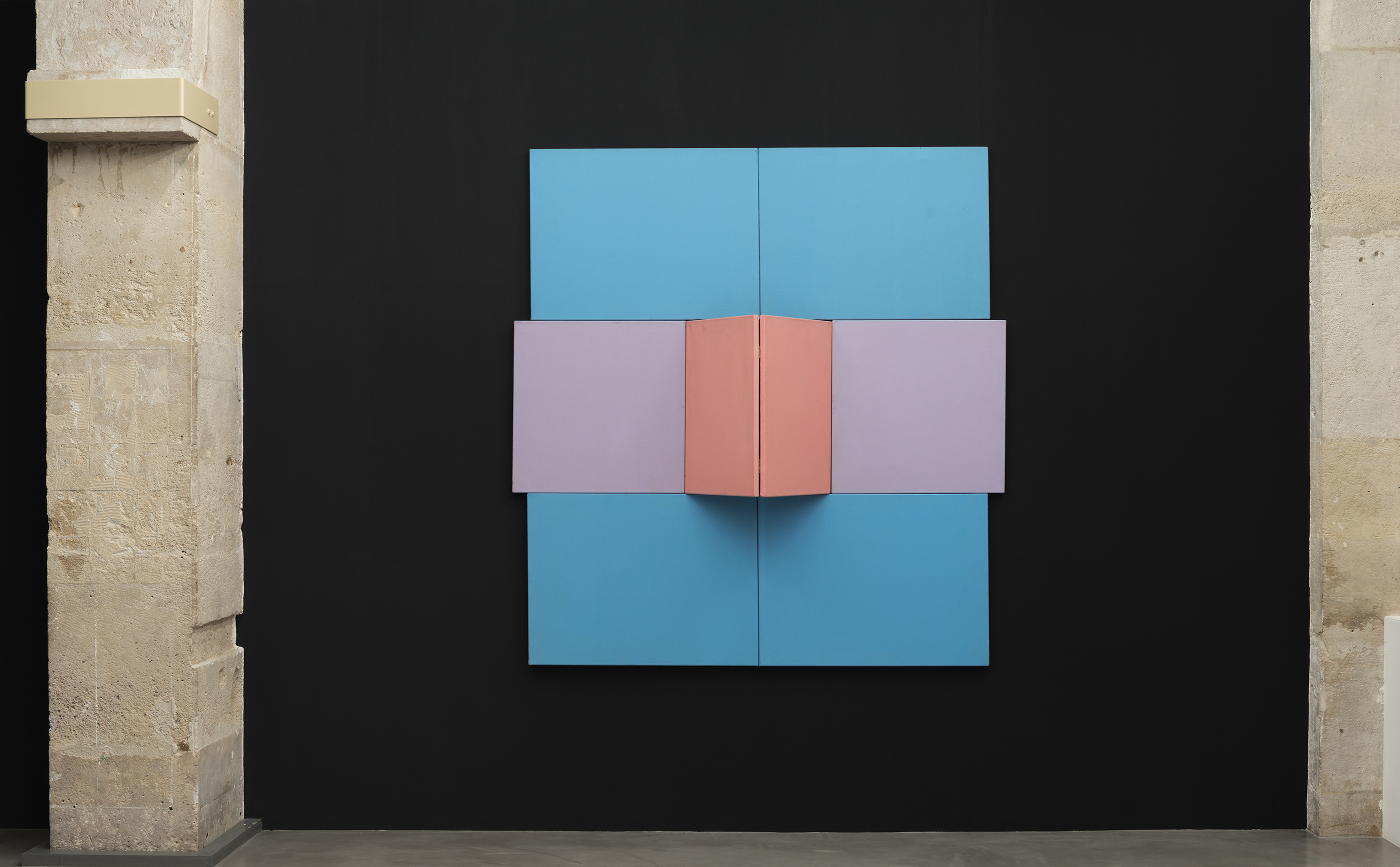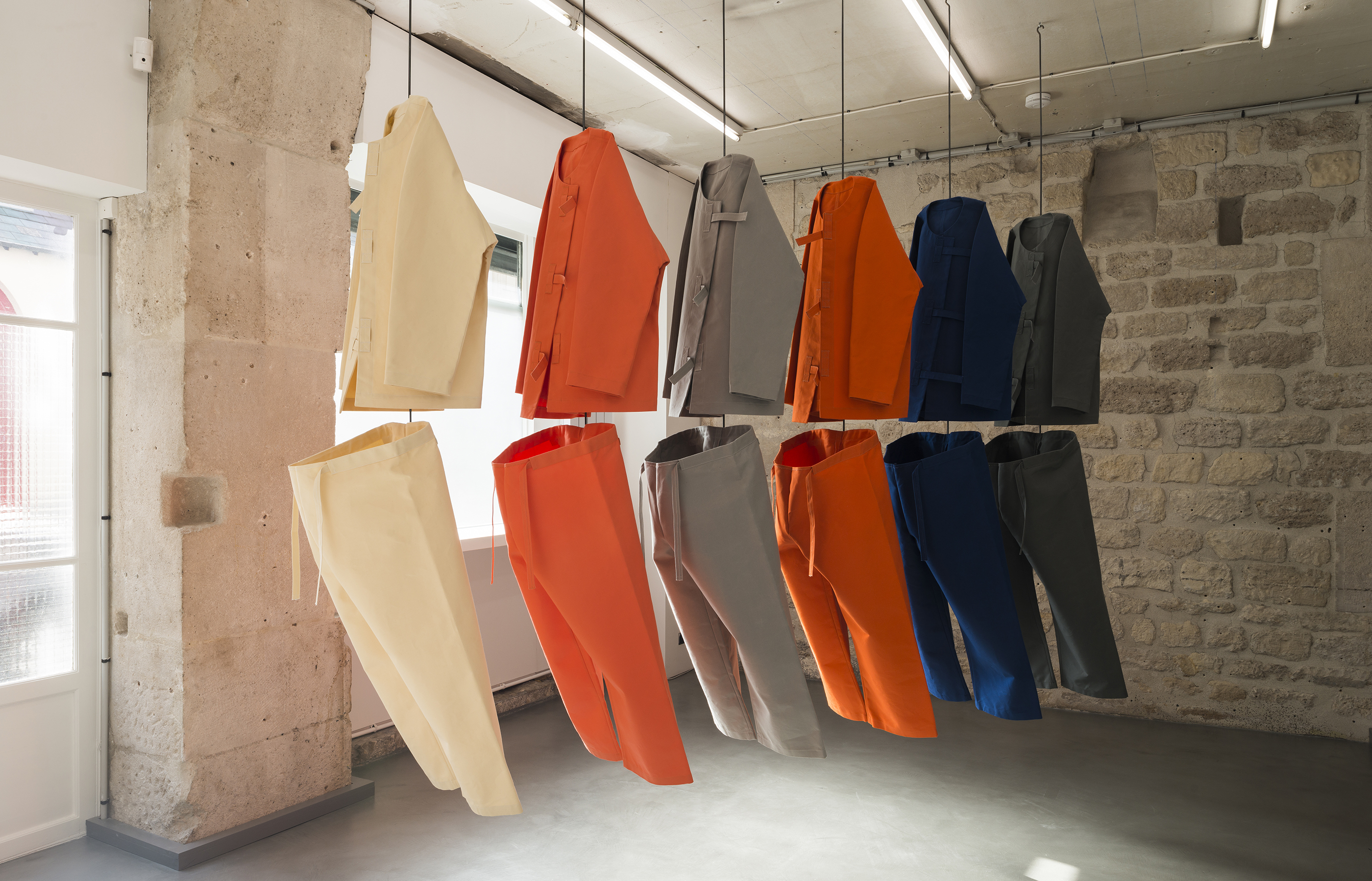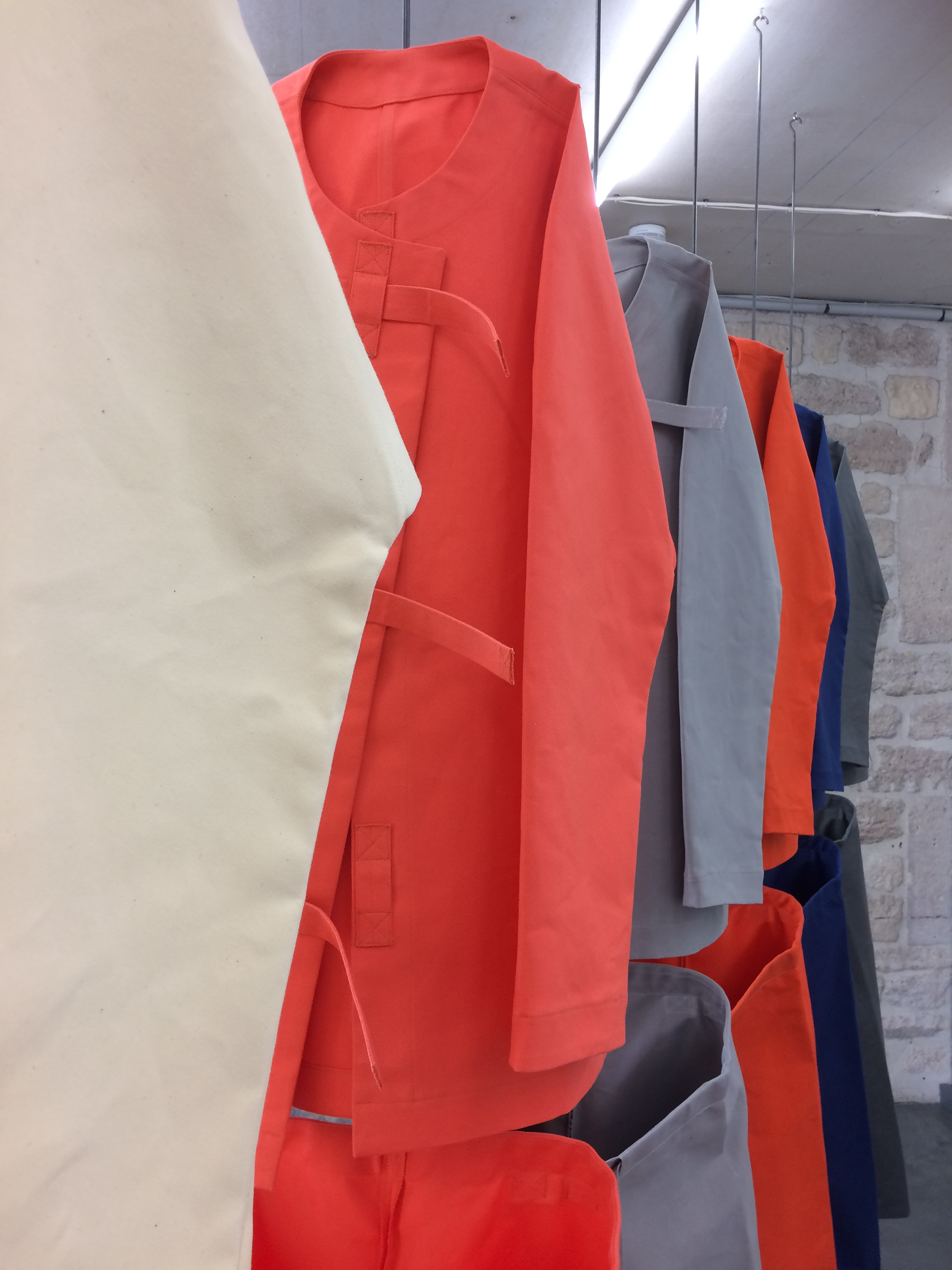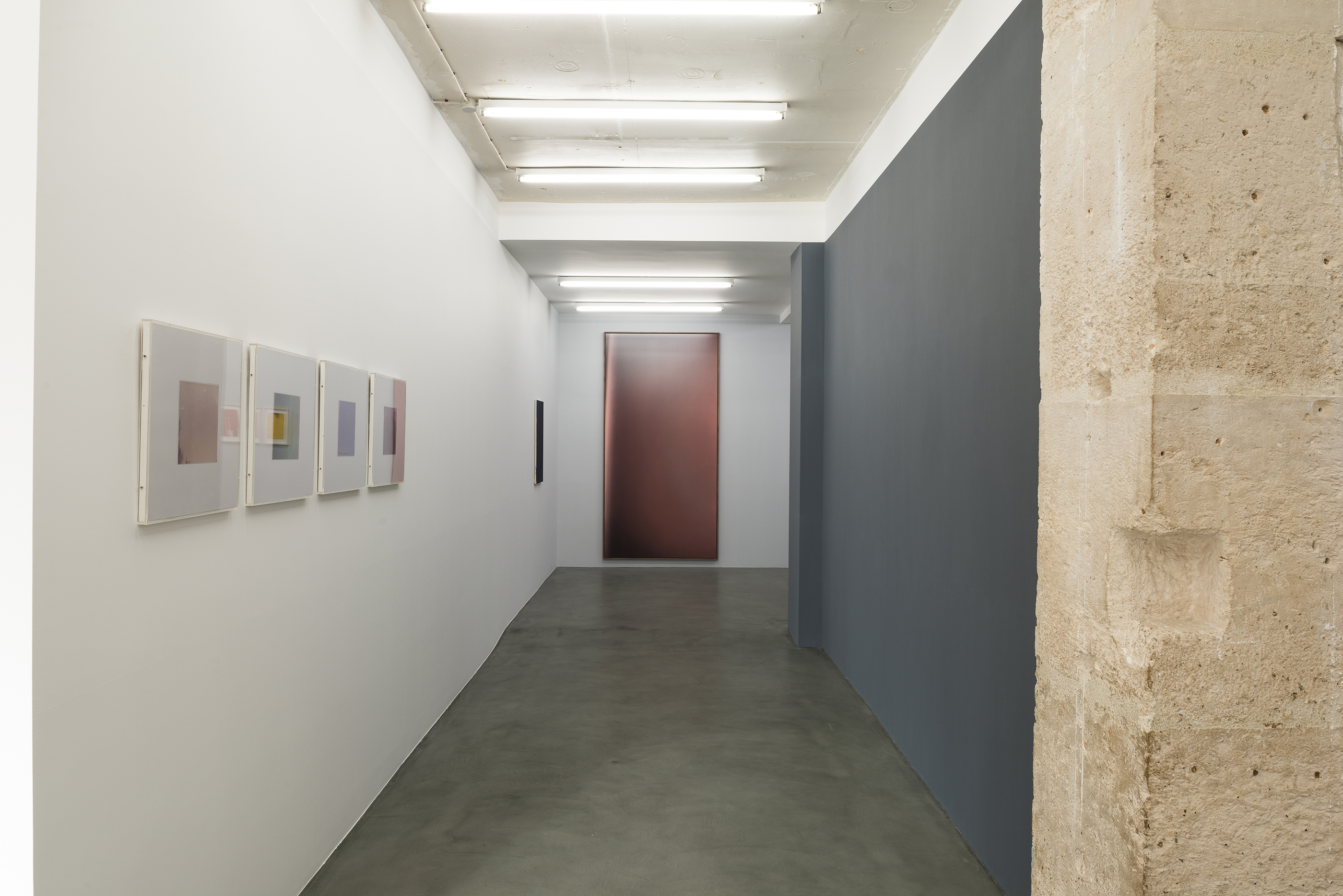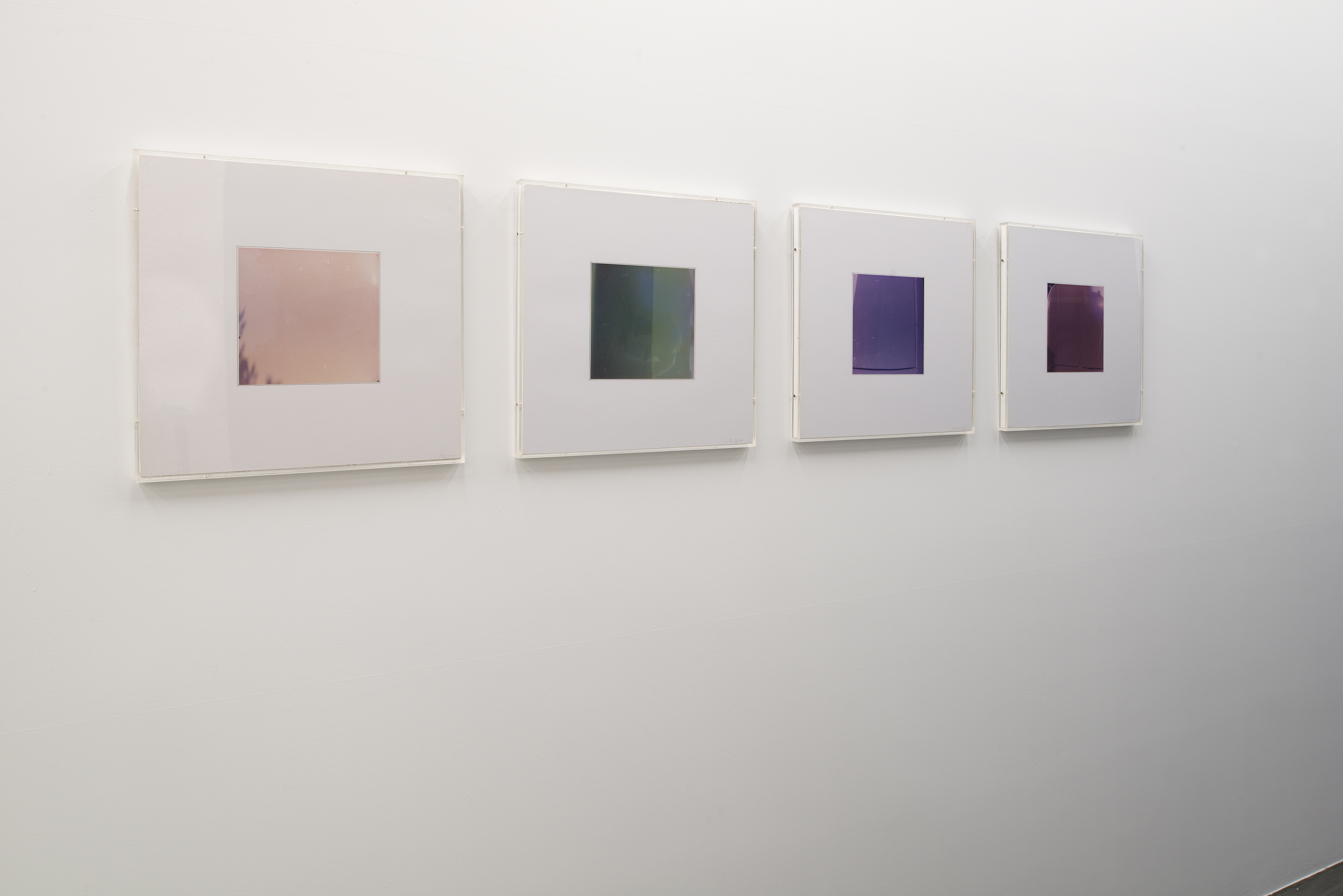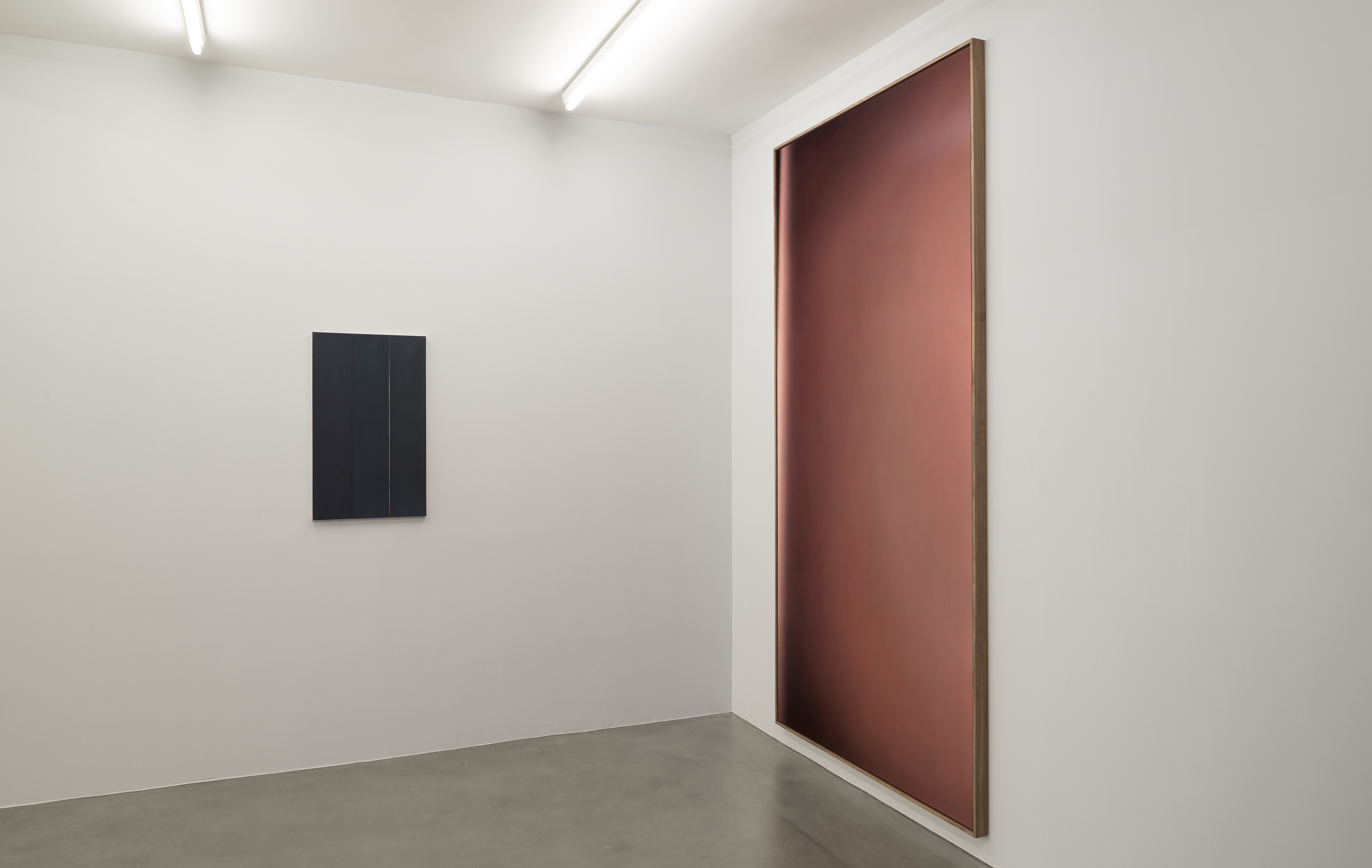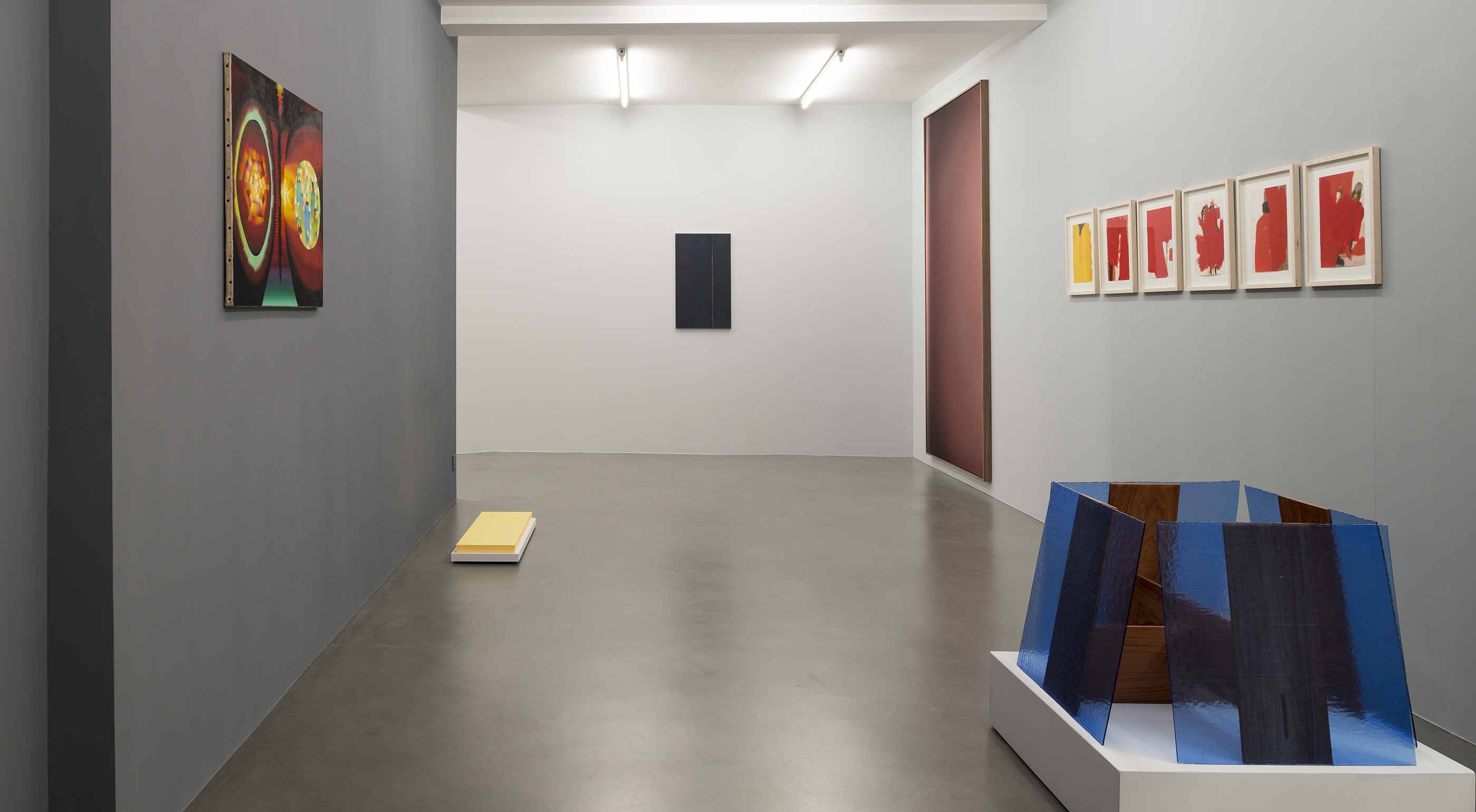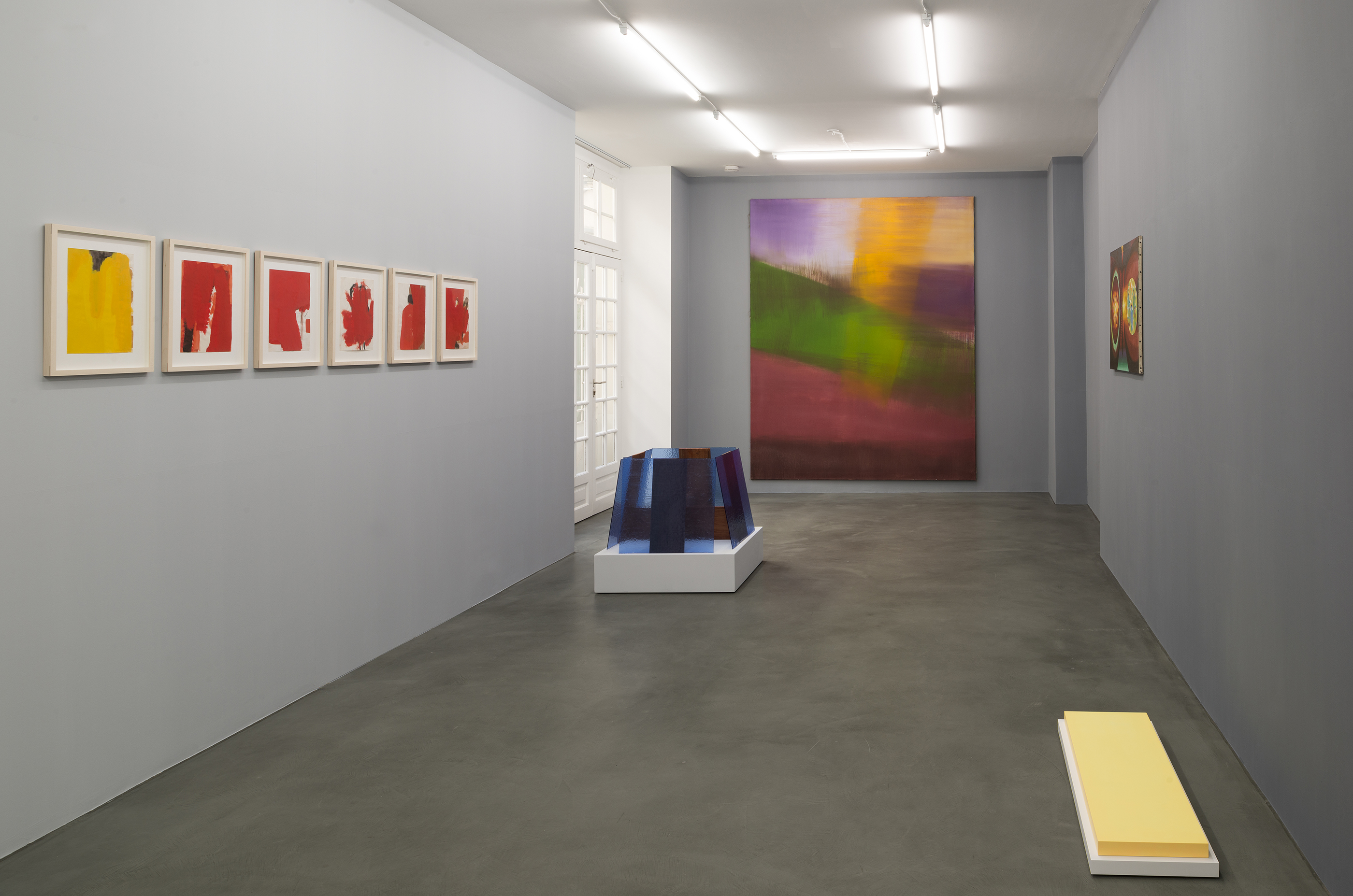André Cadere, Claire Chesnier, Jan Dibbets, Lena Hilton, Pieter Vermeersch, Elodie Seguin, Francisco Tropa, Franz Erhard Walther, Miriam Cahn Vantablack
Imagine someone pointing to a place in the iris of a Rembrandt eye and saying, “the walls of my room should be painted this colour”. Ludwig Wittgenstein, Remarks on Colour In May 1960, Yves Klein registered at the French patent office the envelope Soleau n°63471, which contained two sheets of paper formatted 21.1 x 13 cm, on which the artist, who was used to taking such steps, claimed the international rights for Klein Blue, whose chemical formula he therein revealed1. By specifying, on the first sheet, that the mixture should never be heated directly, and on the second that the colour should be applied “with a roller, a brush or a pistol onto wood, chipboard or hardboard, supported by back cleats and covered with velum”, Klein quite clearly indicated that he was not to be the sole user. Any comparison with the epigone who, in 2016, managed to acquire exclusive rights to the use of a material, which he hadn’t even invented, made up of grey carbon nanotubes, with an absorption coefficient of 99.965%, would thus be vain. Claiming the monopoly over a (material coinciding with a) colour seems to us to be just as absurd and revolting as it did to Maurice Merleau-Ponty, when he said that something coloured cannot be disassociated from the “very experience that reveals it”. The artists (and works) selected for this exhibition belong to complementary stories, generations and sensitivities but each of them has managed to put (back) into perspective, or even deconstruct colour or colour(s) by applying them to procedures, materials, media and protocols that position them or it at the heart of their various approaches. It thus seemed instructive to us to emphasise this dimension, with a chromatic persistence, if not obsession, to offer a few works that “spill over” from the official chronologies of certain artists and thus bring in pieces from their early youth, such as when “Cadere before Cadere” or “Dibbets before Dibbets” laid down the bases of examinations that were to become manifest later on. The presence of these works, relayed by pieces produced between the 1970s and now, means being able to review the commonplace that aims at shutting up conceptualism – with which several artists in the exhibition are associated – in a “neutral” tonality.
